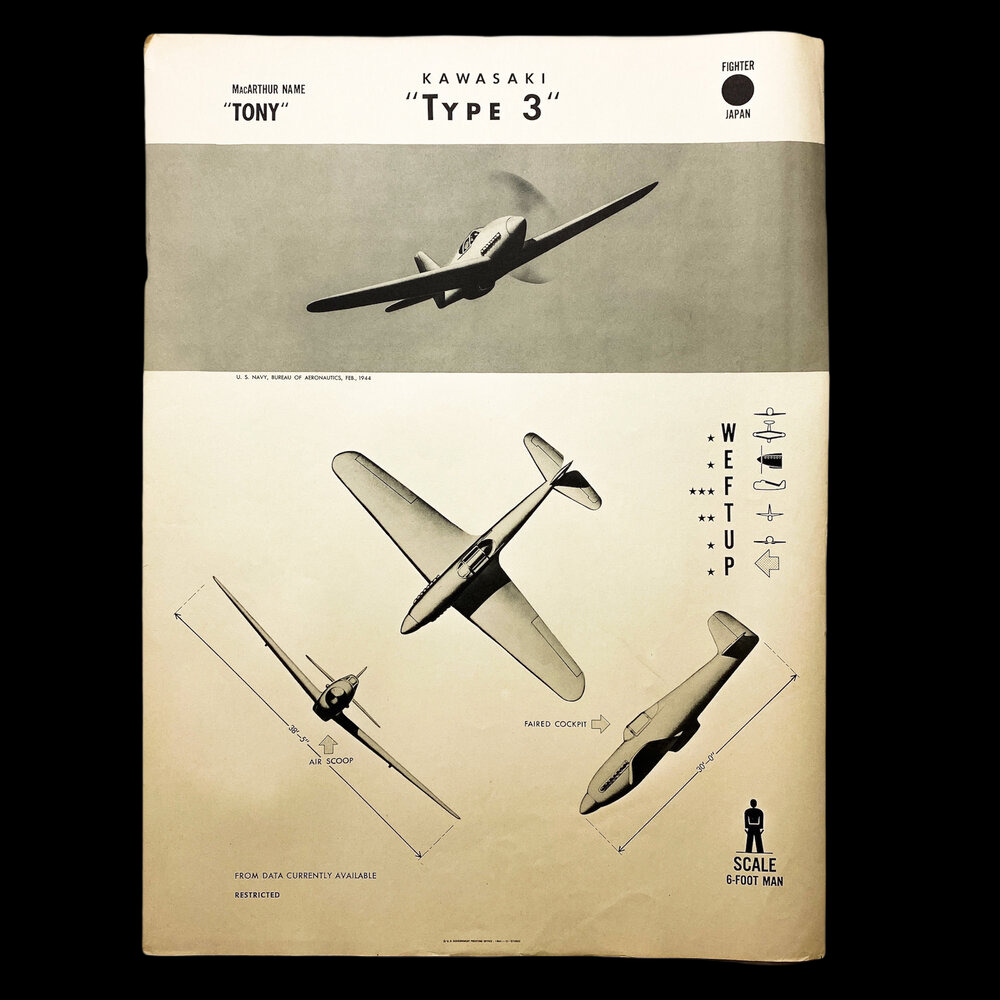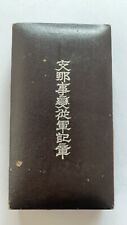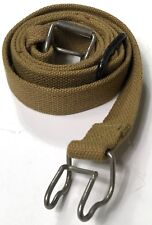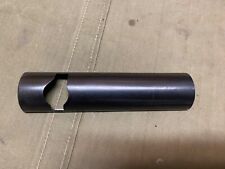When you click on links to various merchants on this site and make a purchase, this can result in this site earning a commission. Affiliate programs and affiliations include, but are not limited to, the eBay Partner Network.
Shipping is a little more because I need to purchase a hard mailing tube to roll and protect the WWII artifact poster.
Comes with C.O.A.
Size: 19 x 25 inches
This original ‘RESTRICTED’ aircraft identification poster was published by the U.S. Naval Aviation Training Division Feb. of 1944 and was printed by the U.S. Government Printing Office 1944. This poster was posted as a training tool as well as an in theater ID poster to help U.S. and other Allied pilots, bomber crews and Naval personal to identify Allied and enemy aircraft. W.E.F.T.U.P. or Wing, Engine, Fuselage, Tail, Undercarriage, Peculiarities was a system set up for the purpose of aircraft identification and recognition.
World War II saw some of the first introduction of these aircraft ID poster to prevent friendly fire and more accurate plane recognition in combat. It was believed these posters alone could save countless lives from friendly aircraft-on-aircraft or friendly anit-aircraft fire. These posters also could cut down precious second pilots, bomber gunners, and naval gun crews would have to ID a plane flying towards them intern saving their lives by shooting first.
Each poster provides the silhouettes, dimensions, and relevant information to educate both air and ground personnel in aircraft identification. Immediate identification of aircraft, friendly or not, was essential in order for the observer (whether in the air e.g., pilot, gunner, or patrol observer, or on the ground, e.g., anti-aircraft crew) to determine his next course of action (e.g., acknowledge, attack, evade, or report). Each poster details a large clean sky and background image of the specified aircraft located as the main top imagine on the poster. It also contains important ‘peculiarities’ such as where certain gun emplacements are located, other special aircraft features, as well as wing and length measurements.
Kawasaki Ki-61 Hien:
The Kawasaki Ki-61 Hien (飛燕, \"flying swallow\") is a Japanese World War II fighter aircraft used by the Imperial Japanese Army Air Service. The Japanese Army designation was \"Army Type 3 Fighter\" (三式戦闘機). Allied intelligence initially believed Ki-61s were Messerschmitt Bf 109s and later an Italian Macchi C.202, which led to the Allied reporting name of \"Tony\", assigned by the United States War Department. It was the only mass-produced Japanese fighter of the war to use a liquid-cooled inline V engine. Over 3,000 Ki-61s were produced. Initial prototypes saw action over Yokohama during the Doolittle Raid on 18 April 1942, and continued to fly combat missions throughout the war.
The Ki-61 looked so different than the usual radial-engined Japanese fighters that the Allies at first believed it to be of German or Italian origin, possibly a license-builtMesserschmitt Bf 109. The first Ki-61 seen by Allied aircrew had been misidentified as a Bf 109 by USAAF Capt. C. Ross Greening during theDoolittle Raid. In early reports, when it was thought to have been a German fighter, the Ki-61 had been code-named \"Mike\". The final, and better known code name adopted was \"Tony\", because the Ki-61 looked like an Italian aircraft.
The new Ki-61Hienfighters entered service with a special training unit, the 23rdChutai, and entered combat for the first time in early 1943, during theNew Guineacampaign. The firstSentai(Air Group/Wing) fully equipped with theHienwas the 68th inWewak, New Guinea, followed by the 78thSentaistationed atRabaul. Both units were sent into a difficult theatre where jungles and adverse weather conditions, coupled with a lack of spares, quickly undermined the efficiency of both men and machines. Because the Ki-61 was so new, and had been rushed into service, it inevitably suffered from teething problems. Almost all of the modern Japanese aircraft engines, especially the Ki-61\'s liquid-cooled engines, suffered a disastrous series of failures and ongoing problems, which resulted in the obsolescent Ki-43 still forming the bulk of the JAAF\'s fighter capability.
Initially, this campaign went successfully for theJapanese Army Air Force(JAAF), but when the Allies re-organized and enhanced the combat capabilities of their air forces, they gained the upper hand against the JAAF. High non-combat losses were also experienced by the Japanese during this campaign. For example, while in transit betweenTrukand Rabaul, the 78th lost 18 of its 30 Ki-61s.
Even with these problems, there was some concern in Allied aviation circles regarding theHien.The new Japanese fighter caused some pain and consternation among Allied pilots, particularly when they found out the hard way that they could no longer go into a dive and escape as they had from lighter Japanese fighters. GeneralGeorge Kenney, the Allied air forces commander in theSouthwest Pacific, found hisCurtiss P-40scompletely outclassed, and begged for moreLockheed P-38 Lightningsto counter the threat of the new enemy fighter.
However, the increasing numerical strength of Allied bomber units, along with inadequate anti-aircraft systems, imposed crippling losses on Japanese units. Approximately 100 out of 130 Japanese aircraft based in the Wewak area were lost during theattacks of August 17–21 1943. By the end of the campaign, nearly 2,000 Japanese aircraft had been lost in air attacks from up to 200 Allied aircraft at a time, around half of which wereConsolidated B-24 LiberatorsandNorth American B-25 Mitchellsarmed with fragmentation bombs. After the Japanese retreat, over 340 aircraft wrecks were later found atHollandia.
The Ki-61 was also utilised inSoutheast Asia,Okinawa,Chinaand as an interceptor during USbombing raids over Japanese home islands, including againstBoeing B-29 Superfortresses. The Ki-61 was notable for many reasons: initially identified as of either German or Italian origin, these aircraft were capable of matching Allied aircraft such as the P-40 in speed, and as evaluation had already showed, were superior in almost every respect. However, the armament of the earlyHienwas lighter, but still sufficient for most purposes. Some authors claim that the Lockheed P-38 Lightning was measurably superior.The Ki-61 carried a great deal of fuel, but due to having self-sealing fuel tanks it was not considered readily flammable, as many other Japanese aircraft were.
A number of Ki-61s were also used inTokkotai(kamikaze) missions launched toward the end of the war. The Ki-61 was delivered to 15thSentai(group/wing), as well as some individualChutaicho(Squadron Leaders) in otherSentai, and even to operational training units in the JAAF. The aircraft was largely trouble-free in service except for the liquid-cooled engine which tended to overheat when idling on the ground and suffered from oil circulation and bearing problems.






